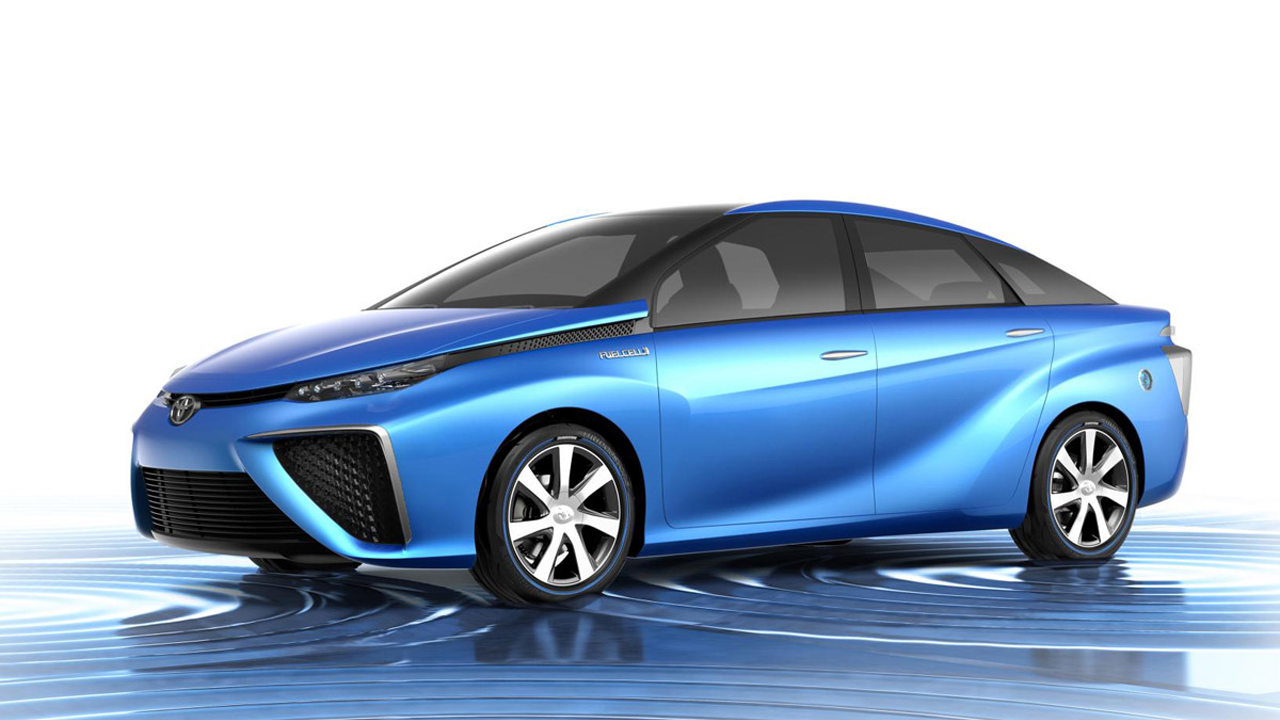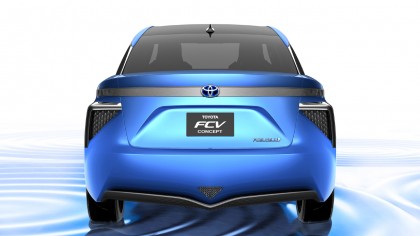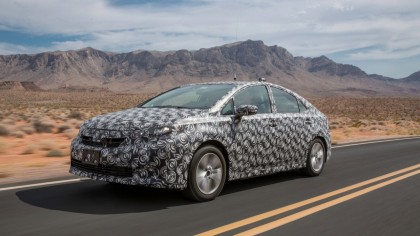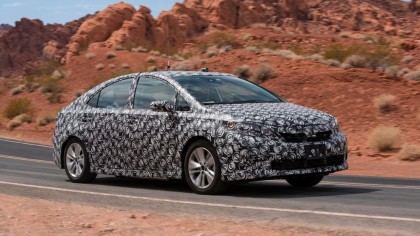The future is here! Toyota's hydrogen-powered cars are go for 2015
Hydrogen-powered car gives new meaning to term vapourware

Toyota is arguably the company that took hybrid cars mainstream with the Prius. Now it plans to do the same for hydrogen-powered fuel-cell cars in 2015.
So said Toyota during a press event at the CES show in Las Vegas. But is the world ready for hydrogen power? And even if it is, does it actually offer real benefits in terms of emissions? Hold those thoughts.
If Toyota pulls off its plan to launch in 2015, the new model will be the first mass produced fuel-cell car, though arguably not the first hydrogen-powered car. BMW, among others, has dabbled with hydrogen-fuelled combustion cars, including a limited-production Hydrogen 7 luxury car.
Toyota's plan, however, involves a fuel-cell that reacts stored hydrogen with oxygen from the atmosphere to generate electricity. The only other product of the reaction is water and thus water vapour is a hydrogen fuel-cell's only emission.
Giving battery-electric a beating
The electricity, in turn, power electric motors. So, as a driving experience, Toyota's fuel-cell car will be in the same ballpark as existing battery-electric cars already on sale, like the Renault Zoe, BMW i3, Nissan Leaf and others.

The big differences compared with those electric cars, however, are the time taken to refuel or recharge and the range once topped up.
Battery-electric cars can take 10 hours or more. At best you're typically looking at minimum one hour for a full charge. As for range, most EVs conk out at a little over 100 miles (Tesla's 300-mile-ish Model S being the obvious exception). Toyota's fuel cell car will be good for about 300 miles.
Sign up for breaking news, reviews, opinion, top tech deals, and more.
But a fuel-cell car can be refilled in five minutes or less. So, there you have it. All the benefits of a battery electric car, including no harmful emissions and pretty much zero engine noise combined with range and quick refill advantages of combustion cars.
What's the catch?
Inevitably, there's a snag. Well, a reasonable list of snags. The biggest problem is infrastructure. A 300 mile range and quick refuelling are all very well. But if there aren't actually any stations offering hydrogen fuel, it's all rather moot.
It will take years to fit out service stations with hydrogen dispensers. Similarly, you need hefty infrastructure to make the fuel itself if you're to power 100,000s or even millions of hydrogen cars. That doesn't happen over night.

The other big problem is one the fuel cell shares with battery-electric cars. Where does the energy come from in the first place? It takes plenty of power to produce hydrogen through methods like electrolysis.
If those methods are powered by fossil fuels, then the only net benefit is reduced local emissions. You're effectively shifting the emissions geographically to wherever the fuel is produced. But they still end up in the atmosphere.
2015 launch
We'll come back to that in a moment. First, is that 2015 launch window realistic? Toyota has been working on this technology since 1992, so it's over 20 years in the making.
Much of the effort has gone into squeezing the fuel cell gubbins down to practical proportions. We've little doubt the car will work well.

Toyota also says technological advancements and price reductions have recently made it possible to now offer the car in greater volumes. Prices aren't being quoted, but Toyota says it want fuel cell cars to accessible and reasonably priced.
As for the broader issue of timing, Bob Carter, senior vice president of automotive operations for Toyota Motor Sales, USA, said, "Fuel cell electric vehicles will be in our future sooner than many people believe, and in much greater numbers than anyone expected."
Investing in infrastructure
On the infrastructure side, Toyota says the car will launch in California first. $200 million has been earmarked to build 20 filling stations in California by 2015 with a total of 40 the year after. That gives both an idea of the investment needed and a hint that a broader roll out will likely be years in the making.
But let's assume the infrastructure works out. How do we solve the displaced emissions problem? Well, the first thing to note is that fuel cell cars probably aren't any worse than combustion cars.

Then consider this. Any time you improve the renewable profile of your broader electricity-generating infrastructure, you get an immediate benefit from fuel cells, since hydrogen produced off the back of grid electricity and in turn fuel cell cars will have emissions footprints that reflect the root power source.
You also have the option of setting up hydrogen production facilities powered purely by renewables. You could have a plant powered by a hydro-electric dam, for instance. Or perhaps a solar-powered facility in hotter climates.
In the long run, then, hydrogen power is very likely to offer major emissions benefits. What's arguable is whether the will to achieve that will emerge while fossil fuels remain in relatively plentiful supply.
Technology and cars. Increasingly the twain shall meet. Which is handy, because Jeremy (Twitter) is addicted to both. Long-time tech journalist, former editor of iCar magazine and incumbent car guru for T3 magazine, Jeremy reckons in-car technology is about to go thermonuclear. No, not exploding cars. That would be silly. And dangerous. But rather an explosive period of unprecedented innovation. Enjoy the ride.